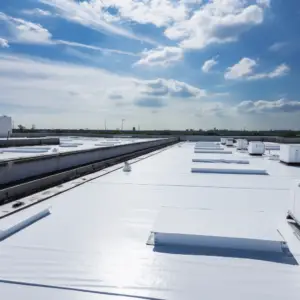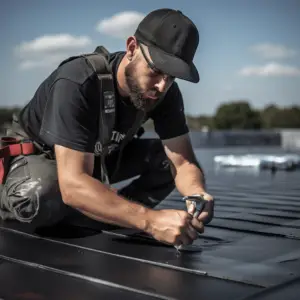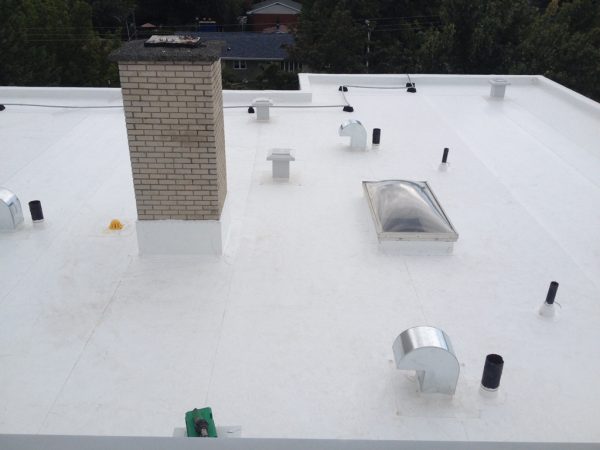TPO Roofing Issues is one of the most popular, cost-effective roofing methods that can be used in just about any substrate. It is a membrane that is currently among the fastest-growing commercial roofing systems out there. There are times, however, when TPO roofing can have problems.
Of course, there are multiple benefits of installing a TPO roofing system onto your commercial roof. It presents great strength, flexibility, and durability, which makes it easy to resist mold growth typically associated with regular rubber tiles and shingles.
Perhaps one of its major highlights is energy efficiency. Generally, the TPO membrane is designed to reflect and resist those Ultra Violet rays that can heat up a building, making it easier to keep the place cooler and pleasant.
Table of Contents
TPO Roofing Problems

But as good as it can be, TPO membrane is associated with several drawbacks that you might want to know about to avoid costly repairs afterwards. Below we’ve explained some of the common TPO problems that you should be aware of.
Easily Punctured Membrane
As much as workable roofs are convenient and easy to install, they can be problematic. On that note, the single-ply membrane that covers the top of a commercial building is the most vulnerable to puncture and penetration. This causes a greater chance for leaks when compared to other types of buildings or roofing structures.
Although walking on a roof may not seem like such an intense thing as doing things like dropping heavy tools or loose screws, you’d be surprised how quickly damage can occur with high volumes of foot traffic over time. Commercial roofs are mostly linked with a high volume of foot traffic in comparison to other roofing structures.
The problem with the single-ply membrane roofing is that doesn’t feature a hard-top layer that’s strong enough to protect the layer of synthetic rubber from things like gravel, loose screws, or dropped tools.
Common TPO problems like this often leave those materials pushed into the rubber membrane, tearing or breaking it by making holes in the rubber and insulation. When this happens, the roofing system will be left vulnerable to leaks even more over time.
On the bright side, with a decent primer, this issue can be eliminated from the list of TPO problems. Simply, give it an extra layer of insulation and protection that it did not have before.
UV Rays Degrading the Adhesives
Another common problem you’re likely to experience with TPO roofing is wear and tear and even scratch. In fact, this is one of the most common issues with almost every roofing system out there, mainly because it is subjected to the elements all year round.
While that also means direct exposure to the sun, those harmful Ultra Violet rays can cause damage to a roofing system over time. This can happen in many ways but with regard to TPO problems, it is simply due to those UV rays degrading the adhesives that are meant to attach the membrane to the substrate.
In addition to that, these adhesives are the only thing that seals the seams of the membranes together, so as to establish a waterproof seal that keeps the roof safe even in the harshest conditions. In other words, your roof is vulnerable without this roof.
When the roof encounters punctures, tears, or damage, the stated UV rays can come into contact with the adhesive layer, which can cause even more damage when those adhesives become ruined.
This is one of the reasons why you should always ensure that the membrane sheets are overlapping during installation. This way, you will be blocking the adhesive from harsh exposure to the UV rays. You will also be preventing the TPO roofing issues from happening on a consistent basis.
Expired Warranty
When you’re planning to invest in a new roofing system, it is always important to pay close attention to the warranty. Note that most manufacturers’ warranties will expect the contractor to resolve the repairs, especially for the first couple of years after installation.
Warranty in roofing systems can range anywhere from 15-30 years. On that note, some TPO roofing issues can be fixed by simply checking the warranty on your side. Keep your head up because when the warranty expires, you might find yourself vulnerable to even higher maintenance and repair bills. This is usually the case when the facility has been experiencing problems.
We cannot emphasize enough that having a good warranty is a great way to ensure quality and keep TPO roofing problems at bay. Otherwise, things like leaks and damages can easily happen and when they do, you want to have a quick and reliable fix by your side. This is far easier compared to having to seek repair services on your own and bear the cost out of your pocket.
Longevity

Another common downside to TPO roofing systems is that they don’t last that long compared to some other roofing systems. TPO roofing is fairly strong and durable, but it is still something from a young technology in the roofing industry.
This simply means the formula employed in the making of the product is somewhat far from perfect as the manufacturers attempt to achieve the optimal point between durability and affordability. Ultimately, some of these roofing systems have had common TPO roofing issues like seam cracks and even failures.
Although certain improvements have been made along the way, chances are this will take time before the final product is perfected. On the bright side, though, while TPO isn’t among the most budget in the market, they tend to be quite durable and reliable more often than not.
The Bottom Line
From the above rundown, it’s easy to state that all of the TPO problems discussed above are rather common and are relatively easy to resolve as well. Plus, they have quite impressive ratings from previous buyers. The most important thing to remember is that you can easily keep them in proper working condition and avoid having to bear all the issues and damages by adding a layer on top to combat excessive UVs as well as checking properly the warranty terms on your side.


